Here’s part II of what will be an ongoing series exploring the best recordings of certain musical eras — some pretty famous albums and some you might not have heard of.
Read part I too.
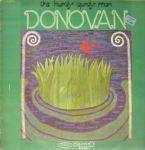 Donovan – The Hurdy Gurdy Man (1968)
Donovan – The Hurdy Gurdy Man (1968)

Scottish psych-folk troubadour Donovan’s music has gone up and down in public esteem over the years, depending on what’s cool at the time; some consider him a twee bubblegum hippiesploitation act, while others go so far as to almost worship him as some sort of New Age guru. In reality, he’s quite a delight as a musician — yes, New Agey as all get out, cosmic wheels a-spinnin’, but in a cheeky, funny, and warm sort of way rather than creepy. And he has a massive catalog of wonderful songs. Many of his albums from the late sixties through early seventies should be considered classics, even if most are very dated-sounding by this point, but this one is the best, IMO, spanning multiple genres and styles, from the silly but somehow gloriously serious heavy psych-rock of the title track (supposedly featuring Led Zep members), to the gentle, wistful meanderings of “Jennifer Juniper” and “The Sun is a Very Magic Fellow“, to clever and atmospheric world music experiments such as “Tangier“, some drony tracks and even some quite jazzy material. Donovan expertly runs the gamut of late sixties folk and rock styles, all in that gentle, slightly Scottish melodious tone of his, proving expert in all of them. An underrated fellow who deserves his share of punter veneration.
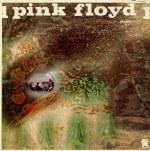 Pink Floyd – A Saucerful of Secrets (1968)
Pink Floyd – A Saucerful of Secrets (1968)

I suppose nothing about Pink Floyd’s history and discography needs any introduction. However, this is an interesting release for many reasons; it’s very much a transitional album between the all-too-short Syd Barrett era of twisted fun and surrealism and the more serious, musicianly Floyd of David Gilmour that went on to international fame. In fact, Barrett appeared on a couple of tracks as he was on his way out, including one that is distinctively rendered in his wistful, childish style: “Jugband Blues”. So this album contains vestiges of the past such as that song and the surrealistic, harsh “Corporal Clegg”, which could easily have fit on the first album, but also the sonic experimentation of the avant-garde title track and the legendary proto-space-rock of “Set the Controls for the Heart of the Sun“. An underrated part of the album’s appeal is the songwriting contributions of the late, much-missed Richard Wright, “See-Saw” and the hazy childhood nostalgia of “Remember a Day“. Overall, though, historical importance aside, the album sounds amazing; maybe, along with parts of Meddle, the album where Floyd’s grandiose music becomes truly transcendent, soothing the mind with waves of gossamer guitar and organ, tinkling piano, and gently reverbed vocals.
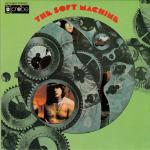 The Soft Machine – The Soft Machine (1968)
The Soft Machine – The Soft Machine (1968)

Canterbury pop group The Wilde Flowers splintered into two groups that acquired legendary status, Caravan and The Soft Machine. Originally, the Softs plied the area of psychedelic pop, including the surrealistic vibes of the Alien Australian, Daevid Allen, who soon left to eventually form Gong. But to say the least, remaining members Robert Wyatt, Mike Ratledge and Kevin Ayers (with help from Hugh Hopper, who also joined at one point) were no slouches themselves! Ayers and Wyatt would both go on to productive, lengthy, and acclaimed solo careers. Wyatt and Ratledge loved jazz more than their own mothers, so the direction soon switched to groovy jazz-rock with a European flavor influenced by chic Frenchness as much as by London psychedelia. This album is totally groovy in a bizarre, stoned way (check out Wyatt’s skittering drumming and scatting on “Hope for Happiness“), philosophical (Ayers’ take on Gurdjieff’s philosophy, “Why Are We Sleeping?”) and humorous (“Why Am I So Short?” and “We Did It Again”). Wyatt’s jazz drumming and Ratledge’s fuzz organ anchor the sound. This album is so varied compositionally, though, and so experimental overall, that you would not go wrong if you tried to peg it as the most important English album of the late sixties. I’m not saying I do, but you could.
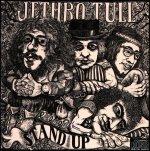 Jethro Tull – Stand Up (1969)
Jethro Tull – Stand Up (1969)

Tull in 1969 was not the stentorian prog-rock behemoth it would become by the early seventies; no intellectually advanced side-long suites and twisty lyrical complexity quite yet. But Ian Anderson’s musical ambitions already far outstripped the modest blues of the band’s 1968 debut, as well as the lyrical ambitions of almost any rock songwriter of the era. Stand Up is comprised mostly of blues-rock, yes, and very good stuff at that — check out new axeman Martin Barre tearing the throat out of riff of “New Day Yesterday“, and his vicious soloing throughout the album. And Anderson tootles away nicely on his flute throughout. But his intricate acoustic guitar playing (always underrated and later developed to a fine art) and his newly sharp lyrical sense add far more interest to groovy, melancholy tunes like “Look Into the Sun” or barely controlled rockers like “Nothing Is Easy”. The most famous track may be a Brubeck-esque Bach interpretation, “Bourée”, but if you dig deeper, the sarcastic, apocalyptic balladeer of Aqualung and Thick as a Brick is already preparing his feast of earthy wisdom and his brew of folk/jazz/rock styles. Do you think I like Tull?
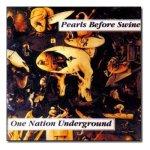 Pearls Before Swine – One Nation Underground (1967)
Pearls Before Swine – One Nation Underground (1967)

Pearls Before Swine was the band of one Tom Rapp, your typical converted earnest folksinger of the period (see: Donovan!) and made several albums that range from the super-psychedelic to a bit rootsy later on, as most people did by the early seventies. I guess the music, at least on this release, generally tends toward the acid folk of the early psych era, lots of mysterious finger-picked guitar and ominous melodies — as though Simon and Garfunkel took a boatload of acid. In order to enjoy the music, you have to get used to Rapp’s super-duper lisp, but it becomes charming after a while, and no psychedelic fan can resist the mysterious allure of “Another Time” and “Morning Song”. The spectral sounds of early psych abound — creaky old organ, harpsichords, badly played sitar, echoey acoustic guitar. There are some upbeat and bluesy songs such as the druggy, scary “Uncle John“, but on the whole this is just plain trippy, so suck back some poison of your choice and take a journey. Not sure why Pearls Before Swine is not generally mentioned among the US psychedelic greats, but it should be.
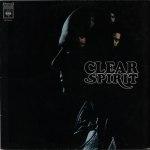 Spirit – Clear (1969)
Spirit – Clear (1969)

This is not Spirit’s best album; that one, the universally acknowledged classic Twelve Dreams of Dr. Sardonicus, was released in in 1970, so I can’t count it here. However, none of Spirit’s sixties albums are anything but great. This is one band that should have been really, really famous, what with the great guitar work and songwriting of the late Randy California, the jazzy drumming and snazzy image of bald elder statesman drummer Ed Cassidy, and the bluesy vocals of Mr. Thunder Island, Canadian Jay Ferguson. Maybe turning down Woodstock had something to do with it! Not a great career move. The band combined blues, jazz, folk, a whole bunch of stuff. Clear alternates vibes between gentle and mysterious and rocking in a revolutionary peace-n-love sort of way. Hence, we have the heavy messages of “So Little Time to Fly” and “Give a Life, Take a Life”, the early blues-rock of “Ground Hog” and “Dark Eyed Woman“, but also the soundtracky jazz of “Clear”. If you pick up a CD, you get the bonus track of California’s “1984”, a dystopian vision that was a minor hit for the band. In most ways Spirit was the quintessential California band of the period, representing all the messages and styles of the era with stunning musicianship. Don’t get just the super-famous album and pass up this one.
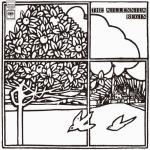 The Millennium – Begin (1968)
The Millennium – Begin (1968)

There was a collective of LA session dudes/writers in the late sixties who would put out these weird psych-pop/sunshine pop albums once in a while. The most famous name to come out of it was Curt Boettcher, an enigmatic fellow but clearly something of a genius, though others like Sandy Salisbury and Gary Usher also found their share of attention. In any case, albums such as this and Sagittarius’s Present Tense are prized by lovers of vintage psych and pop, and with good reason. This collective was expert at harnessing the kaleidoscopic, hazy world of psych and attaching it to Beach Boys-style multilayered pop music. I don’t think it made an impression on the marketplace, but now no psychedelic/sixties collection is complete without it. To be honest, it’s the pure catchiness of the songs that really appeals here, and the wonderful arrangements. It was, after all, apparently, “the most expensive album that Columbia Records had released by that time” (Wikipedia). Anyway, just try resisting the saccharine joys of “To Claudia on Thursday”, the quite spectacular, massive-sounding “It Won’t Always Be the Same” and the gentle rootsiness of “Some Sunny Day.” And then there’s the majestic trip of the jangle-psych classic “Karmic Dream Sequence #1” (complete with zither solo!). That an album this good doesn’t even register on most people’s lists of sixties classics just starkly illustrates how incredibly high the quality of music was during that time.
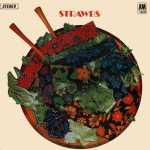 Strawbs – Strawbs (1969)
Strawbs – Strawbs (1969)

Strawbs are best known as the literate prog band in the early seventies that achieved some US success, but before that, they started as a cute little London-based bluegrass three-piece, The Strawberry Hill Boys, before falling into the psych scene, like everyone else, and putting out a pre-prog series of stunning psych-folk albums, of which this debut is a fine example. David Cousins was quite proudly poetic, wordy and a bit pompous in his exploration of Romantic, mystical and gothic themes. But he pulls it off with aplomb! The music is usually acoustic, slow, ponderous, and augmented by cello and other strings, giving a pastoral, pleasantly dated feel. There’s really not a duff track here, but it’s when sounding Brontë-esque and dark that the album’s at its best on songs like “That Which Once Was Mine.” Second guitarist Tony Hooper’s choirboy voice is featured beautifully on the symphonic “Oh How She Changed“. Cousins is at his worst in an overly long ballad based on a chess match (“The Battle”) but at his best when tripping out on the poppy “Where Is This Dream of Your Youth” and the Middle Eastern-music-influenced “Tell Me What You See in Me”. A longtime favorite of mine, this record doesn’t just transport me to 1969 with its mystical, misty vibe — it goes back way further!
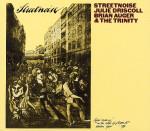 Julie Driscoll, Brian Auger and the Trinity – Streetnoise (1969)
Julie Driscoll, Brian Auger and the Trinity – Streetnoise (1969)

Truly legendary British keyboardist (organ, mainly) Brian Auger led several bands over the years, and his stuff is generally a high-energy fusion of jazz and rock. Most albums of the period are very good, but this iteration fronted by the incredible vocals of Julie Driscoll is the best. If The Soft Machine was aggressively fusing early fusion jazz with a British sensibility, Auger’s crew took that same energy and added a touch of Ike and Tina to this supremely groovy selection of Hammondy nuggets. You can hear traces of Caravan’s sound as well in tunes like “Tropic of Capricorn“, but without the whimsy — it’s all groove and energy. Driscoll shows off her blazingly soulful and daring vocal chops on “Indian Rope Man” and a killer version of “Take Me to the Water”. This woman should have been famous! In addition to the fieriness, there are groovy and surreal psychedelic swayers here like “In Search of the Sun” and “Vauxhall to Lambeth Bridge”. There are lots of famous albums from this period, for sure, and lots of famous British ones, but this sprawling double LP is not included on enough lists. It’s so much more than just a killer organist at work.
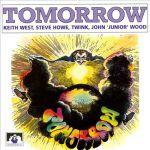 Tomorrow – Tomorrow (1968)
Tomorrow – Tomorrow (1968)

Psych fans know this legendary release very well. Prog fans may know of it because the band’s guitar player was a fresh-faced Steve Howe, of Yes fame. In those halcyon days of early London psychedelia, Tomorrow was one of the bands jostling with Floyd, Soft Machine, Fairport Convention, Tyrannosaurus Rex, etc. for trippy hippie pole position. And their one album does have some distinct pleasures of its own to offer. The overall vibe is not dissimilar to Barrett-era Floyd, but with less of a childlike feel and more overt whimsy. The guitar playing does indeed stand out; Howe has a style all his own, with those lightning-fast runs that threaten to derail at any millisecond but never actually do, and you can hear that style in development on this record. Vocalist Keith West is an effective voice (sort of a slightly less lovely-sounding Iain Matthews), and the songs are melodic and memorable — even moving in a few places, as on the sad tale of the widowed Colonel Brown. The energetically anarchic “My White Bicycle” and “Revolution” are as aggressive as early Brit psych got, offsetting the whimsy of “Claremont Lake” and “Auntie Mary’s Dress Shop”, which sound a bit like Kinks cast-offs. But overall, this is a very melodic and appealing slice of 1968. Oh, and the drummer is underground legend “Twink”.



